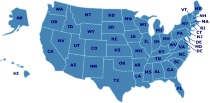Literature Based Curricula
All learning does not need to come through a textbook. In fact, using the world of books, especially "living books," will excite interest in your childen, will bring history alive, and can awaken them to new perspectives and ways of learning.
Resources
Beautiful Feet Books
Beautiful Feet Books publishes Rea Berg's "History Through Literature" study guides. They offer fine children's literature, including the D'Aulaire biographies and Genevieve Foster's "World" titles. This is a great resource for anyone wishing to utilize an approach that studies history through literature.
A History of Science
A History of Science is not a textbook, but is a guide to help parents and children study science through literature. It is intended for children in elementary grades.
Total Language Plus
Total Language Plus is an innovative curriculum focused on teaching thinking and communication skills using literature as a base. The authors believe an integrated system is more efficient than a fragmented approach, discovery style learning is the most effective and learning should be enjoyable. The "discover, do, drill" method is employed throughout the TLP program with activities focusing on thinking skills. These comprehensive novel studies cover spelling, grammar, punctuation, vocabulary, analytical and critical thinking, comprehension, writing, listening, and field trips and projects.
Five in a Row
Five in a Row provides a step-by-step, instructional guide using outstanding children's literature for children ages 4-8. Unit studies are built around each chosen book. There is a series for preschoolers called "Before Five in a Row," along with other volumes for older children.
Featured Resources
As an Amazon Associate, we earn from qualifying purchases. We get commissions for purchases made through links on this site.
Idea Book For Cuisenaire Rods At The Intermediate Level
Grades 2-5. Idea Book designed for use with Cuisenaire Rods.
Montessori International
Montessori International is the magazine for all parents and teachers. Montessori International magazine is a high quality colour education magazine with a Montessori focus and a truly child-centred approach. The magazine is for Montessori parents, nursery owners, teachers, and students with an interest in Montessori education.
A Little Way of Homeschooling
This book is a compilation of the experiences of 13 different homeschoolers and how they incorporated an unschooling style of teaching in their homes. This book addresses the question of whether a Catholic can happily and successfully unschool. This home education approach is presented as a sensible way to access the mystery of learning, in which it operates not as an ideology in competition with the Catholic faith, but rather a flexible and individual homeschooling path.
A Charlotte Mason Education: A Home Schooling How-To Manual
The immensely popular ideas of Charlotte Mason have inspired educators for many decades. Her unique methodology as written about in her six-volume series established the necessary protocols for an education above and beyond that which can be found in traditional classroom settings. In A Charlotte Mason Education, Catherine Levison has collected the key points of Charlotte Mason's methods and presents them in a simple, straightforward way that will allow families to quickly maximize the opportuni...
Homeschooling and Libraries: New Solutions and Opportunities
Homeschools are alwsy looking for alternative ways of schooling that do not necessarily reflect what a typical classroom looks like. Since homeschooling is so diverse across families, information institutions, including public, academic, school, and special libraries may find it challenging to meet all their needs and desires. This collection of essays offers approaches and strategies from library professionals and veteran homeschoolers on how to best serve the needs and experiences of homeschoo...




